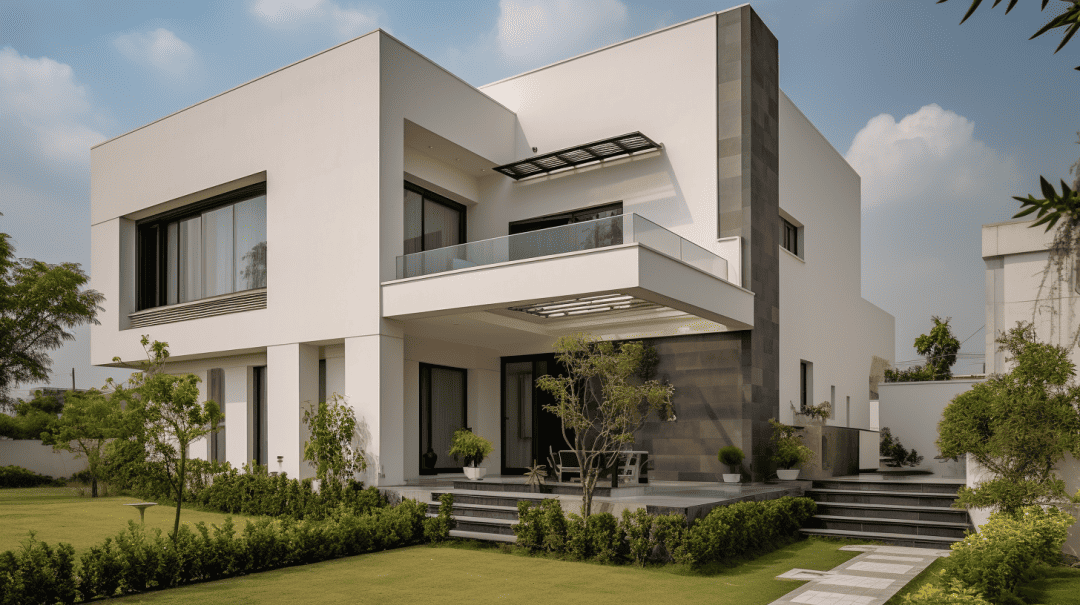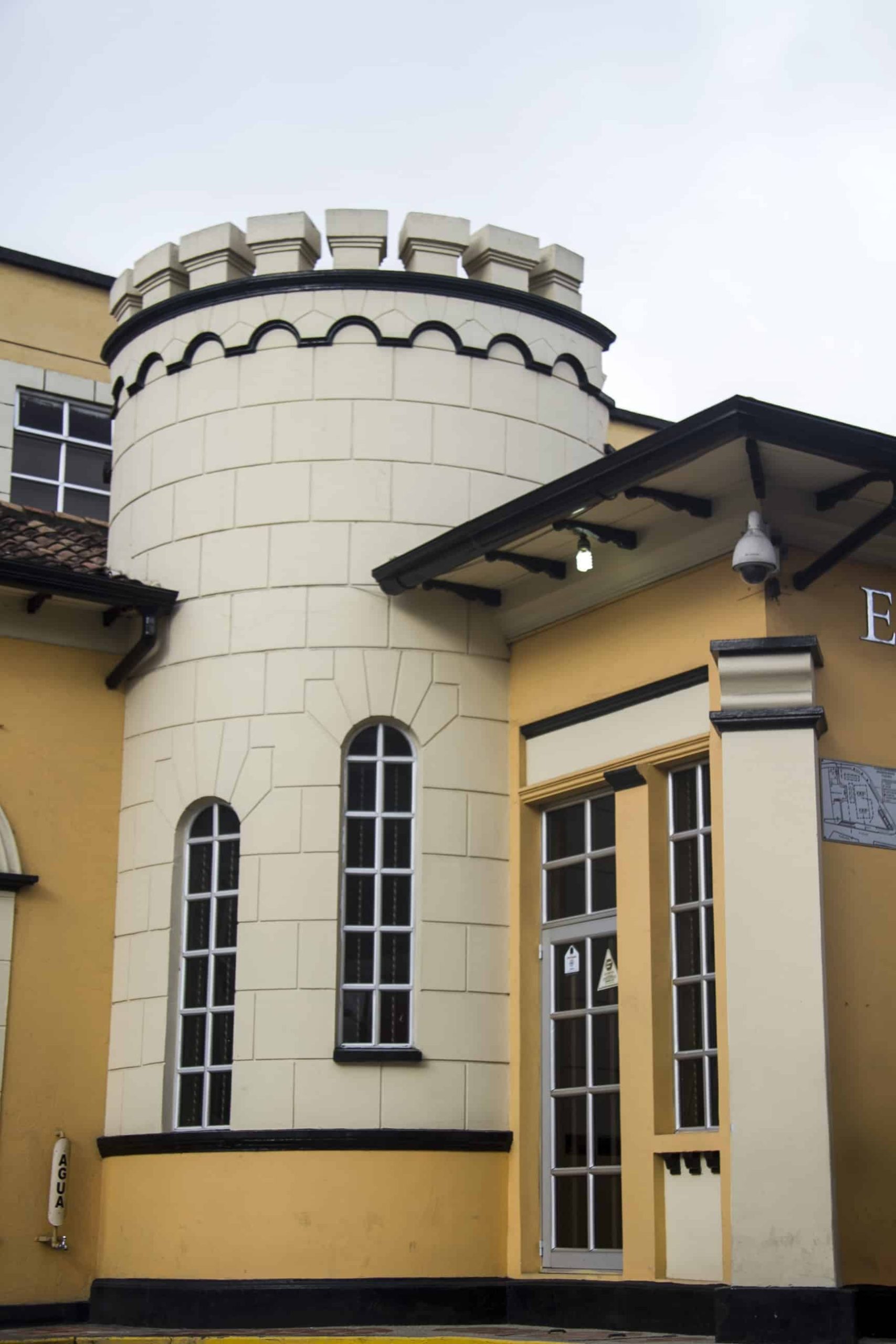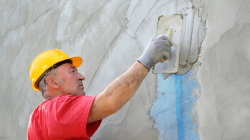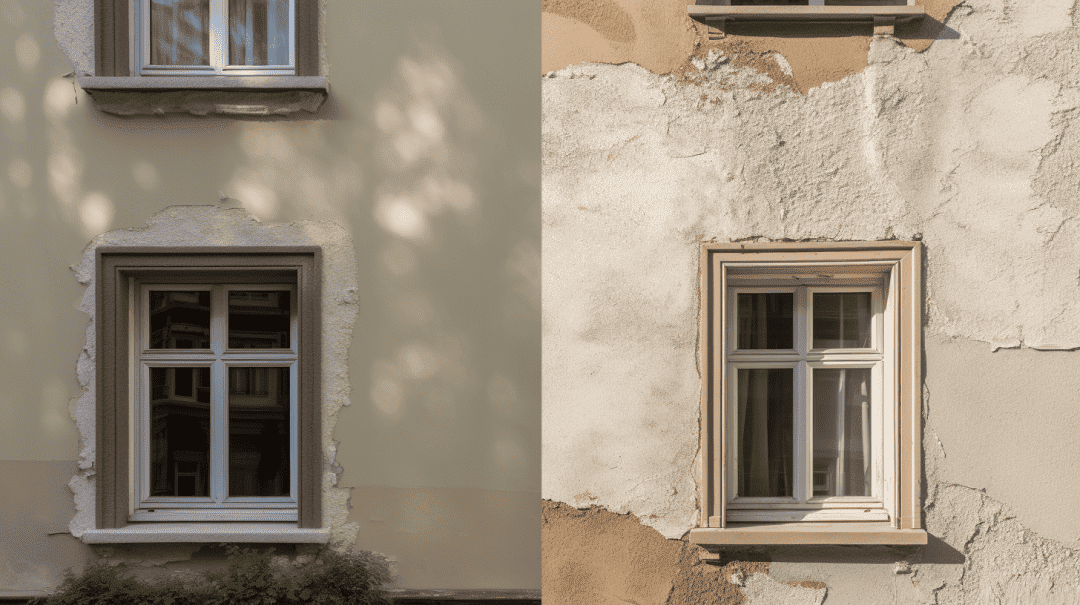Unlocking the Secrets of Soundproofing: How EIFS Enhances Acoustic Comfort in Modern Buildings
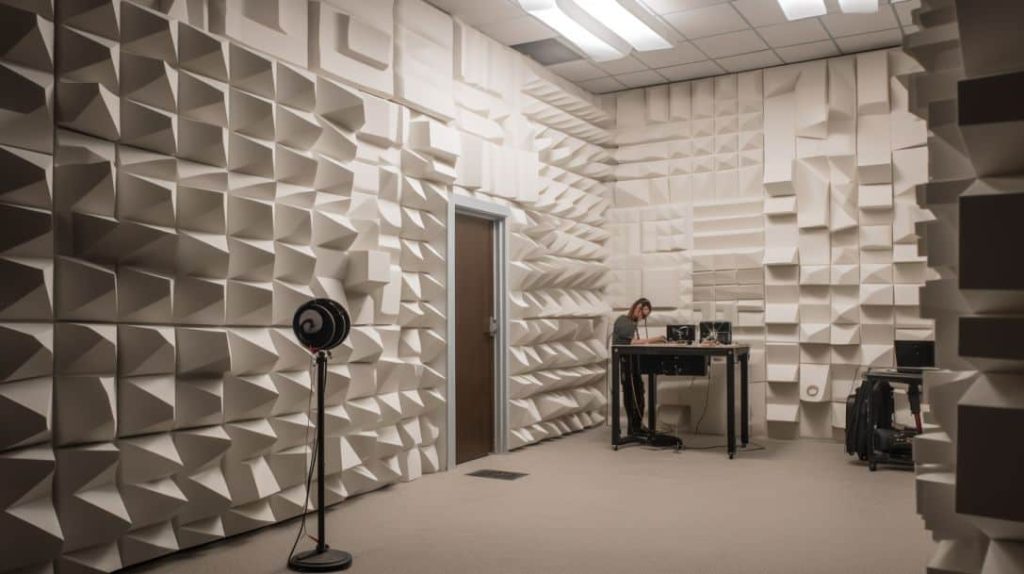
Exterior insulation and finish systems (EIFS) have become a popular exterior wall cladding option for both residential and commercial buildings. Compared to traditional stucco finishes, EIFS offers superior insulation, weather resistance, and design flexibility. However, one of the most notable yet overlooked benefits of EIFS is its ability to dampen sound transmission.
EIFS has excellent acoustic properties that reduce outdoor noise levels and improve interior sound quality. Proper specification and installation of EIFS contribute significantly to its noise-blocking abilities. In this article, we will examine key factors related to the acoustic performance of EIFS walls.
We will cover topics such as:
- The sound-dampening capabilities of various EIFS assemblies
- Research data comparing EIFS to other claddings
- Variables that impact acoustics like insulation thickness
- The importance of proper installation for optimal performance
- Building code compliance and fire resistance
- Recent advances in acoustic EIFS technology
With insights from leading EIFS installer Indiana Wall Systems, this guide will outline the noise-reducing benefits that make EIFS a smart choice for buildings where sound control is a priority.
Understanding Exterior Insulation and Finish Systems (EIFS)
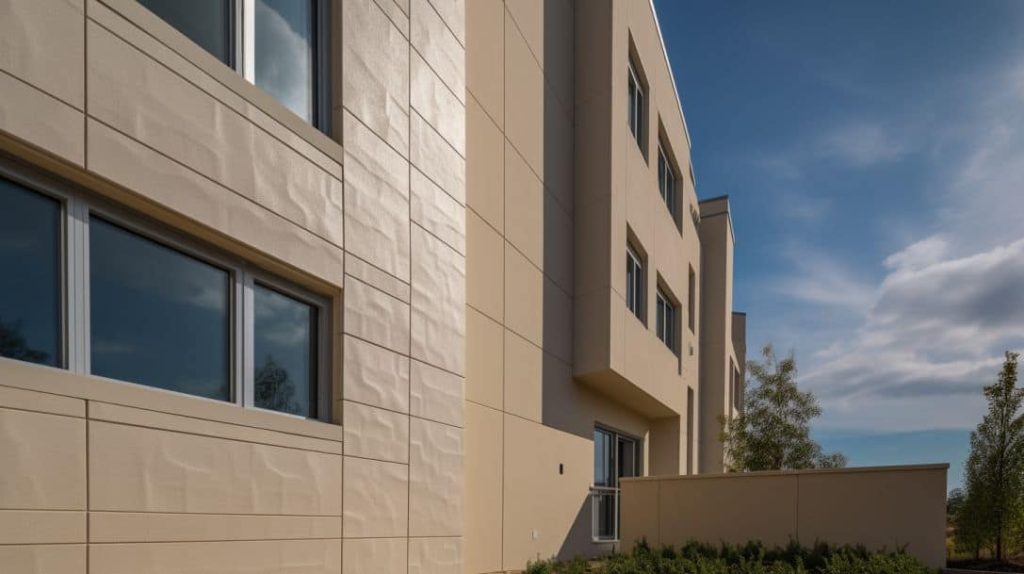
EIFS, also known as synthetic stucco, refers to a multi-layer exterior wall system that consists of the following components:
- Insulation boards – Typically expanded polystyrene (EPS) foam that provides thermal resistance and impact absorption.
- Base coat – Cementitious layer that embeds the fiberglass mesh reinforcement.
- Fiberglass mesh – Provides crack resistance and strength.
- Finish coat – Acrylic or polymer-based coating available in various textures and colors.
The insulation layer is adhered directly to the exterior sheathing of the building, with the base coat and mesh layered on top. The final finish coat creates an aesthetic exterior facade. Compared to traditional stucco, EIFS offers benefits like:
- Enhanced insulation – The EPS foam insulation minimizes thermal bridging and air infiltration. This improves energy efficiency and indoor comfort.
- Water resistance – Layered components provide effective moisture management when properly installed.
- Lighter weight – Weighs dramatically less than stucco, reducing structural load.
- Design versatility – Available in countless finishes, textures, and colors.
EIFS has grown exponentially in popularity in recent decades for both residential and commercial projects. When correctly specified and installed, EIFS provides excellent durability and performance.
The Acoustic Properties of EIFS

EIFS has proven to provide exceptional sound-dampening capabilities compared to other common exterior wall materials. Let’s examine the specific acoustic performance attributes of EIFS in more detail:
Sound Insulation and Noise Reduction
The layered construction of EIFS, particularly the inclusion of rigid insulation boards, enhances sound insulation in several ways:
- The EPS foam boards act as an effective noise barrier, obstructing the transmission of exterior sound waves.
- The foam material absorbs noise vibration rather than passing it through the wall assembly.
- The base coat and reinforced mesh add mass, which further dampens noise.
- Air cavities between EIFS layers create breaks that disrupt noise transfer.
By greatly reducing the transmission of outdoor noise, an EIFS facade improves interior acoustic comfort levels. This allows architects to specify EIFS to help meet interior noise criteria in occupied spaces.
Research and Data on Acoustic Performance
Extensive laboratory testing and field studies have quantified the acoustic superiority of EIFS walls versus other exterior cladding options:
- One study tested four wall types, finding an average transmission loss of 26 dB for EIFS, compared to 19 dB for brick, 16 dB for stucco, and 14 dB for concrete block.
- EIFS outperforms most claddings by 10-15 decibels in sound absorption tests. The more exterior noise is reduced before it reaches the inside, the quieter and more peaceful the interior environment.
- The density and thickness of the EPS foam boards directly enhance acoustic performance – increasing insulation thickness from 1 to 2 inches boosts sound insulation.
In summary, data confirms that the noise-blocking capacity and interior sound quality achieved with EIFS is beyond that of traditional building materials. Correct design and installation are critical to optimize the acoustic benefits of EIFS walls.
EIFS vs. Traditional Stucco
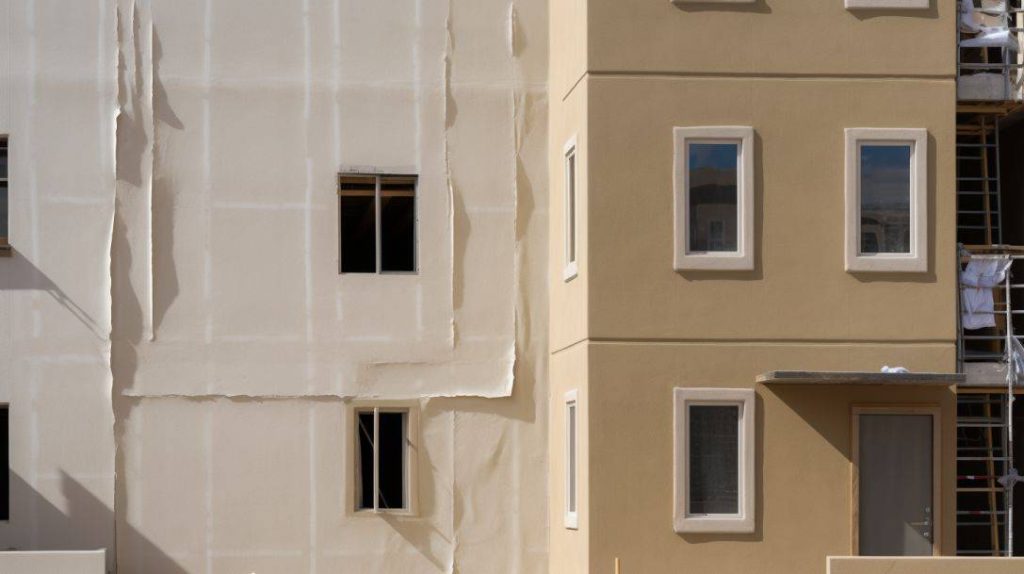
While EIFS is sometimes still referred to as “synthetic stucco”, it has very different properties and performance attributes compared to traditional stucco wall systems. This is especially true when it comes to sound insulation.
Differences in Acoustic Properties
Traditional stucco consists of a metal lath or wire mesh reinforced scratch coat and a sand-textured finish coat. Unlike EIFS, it does not incorporate insulative foam boards. The lack of a sound-absorbing insulation layer results in significantly less acoustic dampening:
- Laboratory tests show stucco provides only a modest sound reduction of approximately 16 decibels.
- EIFS blocks 10-15 more decibels of exterior noise than the same thickness of stucco.
- The hard, reflective surface of stucco worsens reverberation within interior rooms.
The inclusion of EPS insulation boards is the primary reason EIFS excels at muffling noise compared to traditional stucco systems. Specifying thicker foam enhances sound-dampening performance.
Cost Comparison
In terms of upfront costs, installing EIFS is generally 15-20% more expensive than stucco of an equivalent thickness. However, this premium cost is well worthwhile based on the energy efficiency and acoustic benefits gained. Operating savings over the lifespan of the building offset the marginal extra installation expense.
Overall, the superior insulation and sound-blocking performance of EIFS make it a smart long-term investment compared to basic stucco finishes.
Factors Affecting Acoustic Performance of EIFS
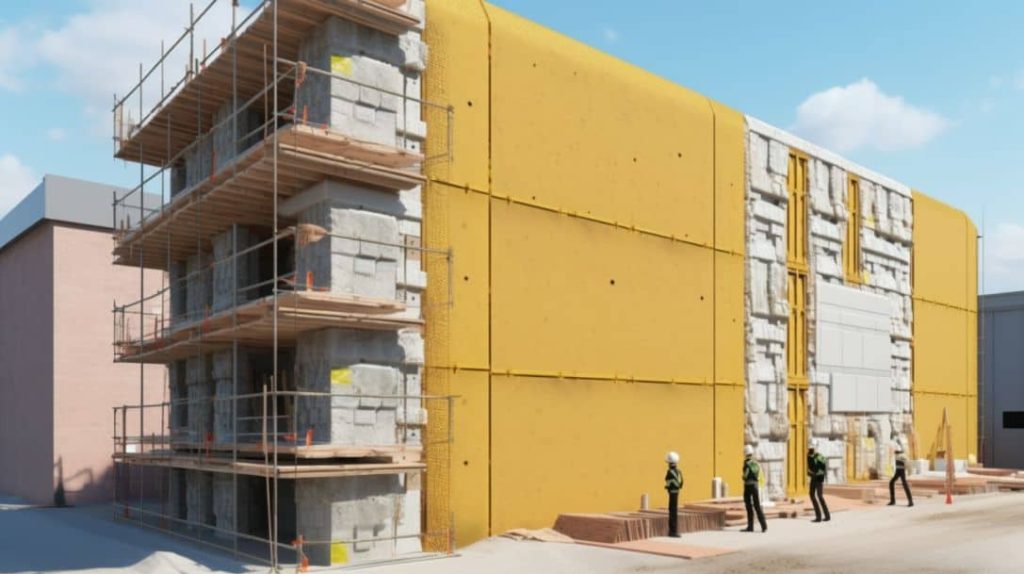
The noise reduction capabilities of an EIFS wall assembly depend on several key factors. Proper specification of materials and installation methods is crucial to achieve optimal interior sound quality.
Insulation Material
The type of insulation used in the EIFS system directly impacts acoustic behavior:
- Expanded polystyrene (EPS) foam board – The most common EIFS insulation. EPS provides excellent noise reduction, can be produced in various densities for tuning acoustic properties, and has a smooth surface for coating adhesion.
- Extruded polystyrene (XPS) foam – Higher density than EPS. Enhances sound insulation but is more expensive.
- Polyisocyanurate foam – Similar performance as XPS. Used for added insulation value in colder climates.
- Stone wool – Inorganic fiberboard made from basalt rock and recycled slag. Recently adopted for use in EIFS assemblies to further improve fire resistance and acoustics.
Polymer-based foam boards like EPS generally provide the best combination of sound absorption, cost, and EIFS system performance.
Wall Thickness
Increasing the thickness of the EIFS assembly improves sound transmission loss:
- Adding 1 inch of EPS foam insulation boosts acoustic performance by 2-3 decibels.
- Doubling insulation thickness from 1 to 2 inches increases noise reduction by 4-6 decibels.
- An EIFS wall with a 2″ EPS board significantly outperforms 1″ EPS in acoustic tests.
Thicker EIFS assemblies should be specified where exterior noise levels are higher or maximum interior sound isolation is desired.
Installation Method
Proper installation is crucial for achieving the full acoustic potential of EIFS:
- Adhesive and mechanical fastener spacing must follow manufacturer specifications to create a monolithic facade that performs as a unified sound barrier.
- Insulation board joints must be tightly abutted without gaps to prevent noise leaks. Joints are ideally staggered between layers.
- Flashing, openings, penetrations and connections to other materials are common sound bridges if not properly detailed.
Retaining an installer certified by the EIFS Industry Members Association helps ensure proper techniques are followed for maximum acoustic benefit.
Importance of Proper Installation for Acoustic Performance
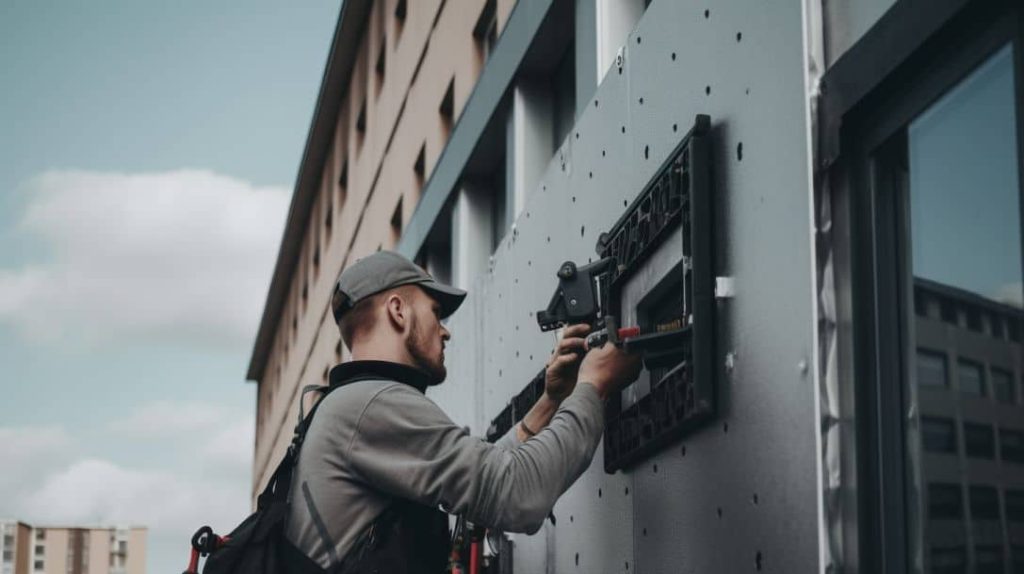
While EIFS as a technology provides exceptional noise reduction, realizing its full acoustic potential depends greatly on proper installation. Unfortunately, imperfect installation is common and often degrades sound insulation.
Common Installation Mistakes
Some of the most frequent EIFS installation errors that compromise acoustics include:
- Inadequate adhesive – Skimping on adhesive between the insulation and substrate reduces acoustic bonding. Gaps or voids are created that allow noise intrusion.
- Fastener spacing – Using too few fasteners or spacing them too far apart decreases mechanical rigidity. This allows sound vibrations to transfer through the wall.
- Incomplete flashing – Missing or incorrect flashing around penetrations and connections to windows, doors, and roofs provide an open path for noise to enter the structure.
- Gapped boards – Any gaps between adjoining insulation boards become weak points for noise to penetrate. Good contact between boards is vital.
- No backwrapping – Mesh must be embedded into all edges and openings to fully seal the facade. Missing mesh allows sound leaks.
While EIFS is forgiving, imperfect installation still reduces noise control compared to flawless, workmanship.
Role of a Certified Installer
To ensure proper installation and maximize acoustical performance:
- Specify an EIMA-certified installer – The EIFS Industry Members Association provides training and certification for proper installation techniques.
- Review acoustic details – Have the installer explain their process for detailing penetrations, joints, and connections to avoid sound transfer.
- Inspect workmanship – Closely monitor the installation quality and completeness on site before concealment by the finish coatings.
Retaining a certified EIFS installer expertly trained in proper installation methodology is highly recommended to actualize the full sound-blocking capabilities of an EIFS wall. Their expertise results in a quieter, more peaceful interior environment.
EIFS and Local Building Codes
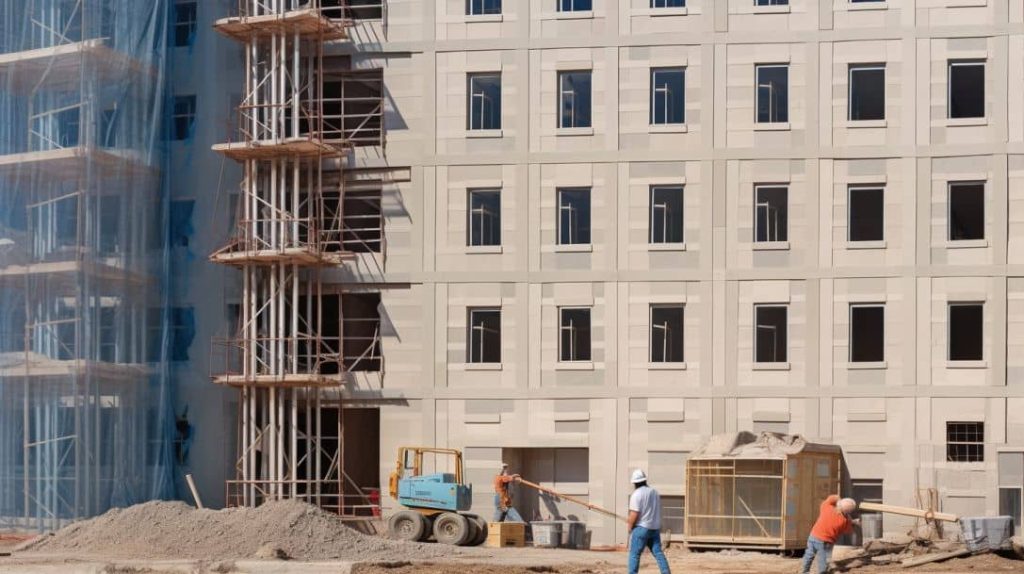
For acceptance and approval as exterior cladding, EIFS installations must comply with applicable regional and local building codes.
Compliance with Indiana Building and Residential Codes
In Indiana, the residential building code is based on the 2018 International Residential Code (IRC), while the commercial building code follows the 2021 International Building Code (IBC).
Key areas addressed by the codes include:
- References to ASTM standards for EIFS materials and installation
- Requirements for water-resistive barriers and moisture control
- Limitations on EIFS use in flood hazard areas
- Standards for wind load resistance and drainage
- Allowable EIFS configurations for fire safety and separation
With proper design and certified installation, EIFS can fully comply with Indiana’s building code requirements for both residential and commercial structures.
Local Jurisdiction Amendments
In addition to the statewide codes, some local jurisdictions in Indiana have enacted amendments that specifically pertain to EIFS:
- Additional inspection requirements in some cities
- Limitations on finish colors or textures
- More stringent standards for sealing windows and doors
By working with local code officials early in the design process, any area-specific EIFS regulations can be addressed to ensure approval.
Overall, compliance with Indiana’s codes and standards allows for the versatility and advantages of EIFS to be utilized for both residential and commercial projects throughout the state.
Fire Resistance of EIFS
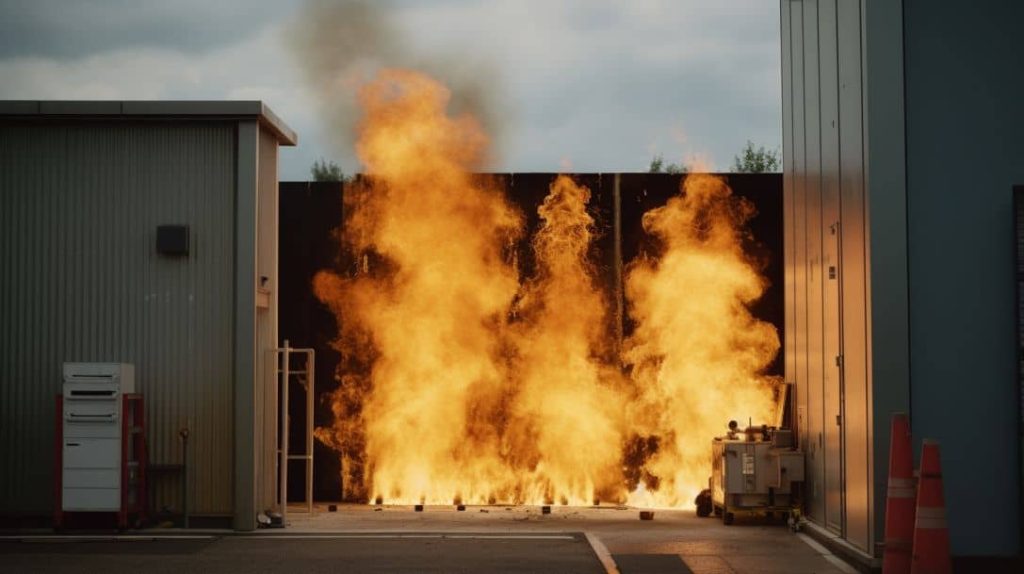
Fire safety is a key concern for any building facade material. EIFS is designed to provide adequate fire resistance when manufactured with fire-rated components and properly installed per code requirements.
Fire-Rated Materials Used in EIFS
There are several ratings used to indicate a material’s fire performance:
- Flame spread index – Indicates how quickly flame will spread over a surface. EIFS finishes have Class A ratings (0-25 spread index).
- Fuel contribution – The potential for a material to contribute fuel to a fire. EIFS has low fuel contribution.
- Smoke development – The amount of smoke produced when burned. EIFS has moderate smoke development.
- Non-combustibility – Materials that will not ignite, burn, support combustion, or release flammable vapors at high temperatures. The insulation boards used in EIFS meet non-combustible standards.
By specifying components with proper fire ratings, EIFS can meet code requirements for flame spread, fuel load, and smoke production.
Code Compliance for Fire Safety
The International Building Code regulates allowable configurations for EIFS based on fire separation distance and construction type.
- On non-combustible buildings, EIFS can be used without height restrictions.
- On combustible buildings, limitations exist on building height and distance between openings.
- Utilizing fire-rated insulation enhances fire performance.
When properly installed on approved constructions, inspected, and maintained, EIFS provides code-compliant fire resistance for the full wall assembly.
Advancements in Acoustic Technology for EIFS
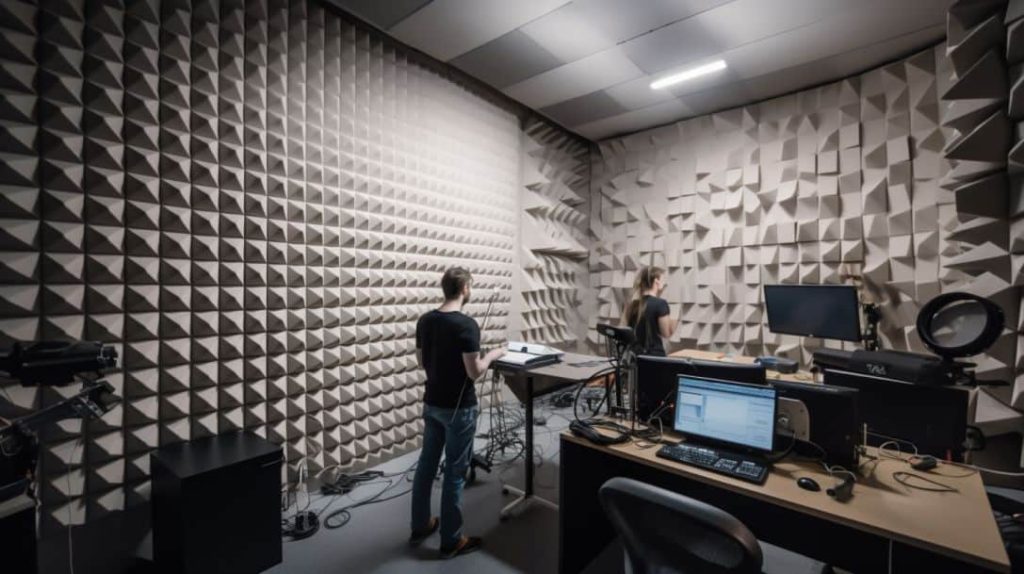
While EIFS has always provided good sound insulation, manufacturers continue innovating new technologies to further enhance the acoustic performance of EIFS wall assemblies.
Drainage EIFS Systems
Traditional EIFS relied solely on face seals to repel bulk water. Drainage systems add a drainage plane that allows water to escape:
- The drainage plane is created with vertical grooves in insulation boards or by attaching a plastic matrix.
- Channels drain any moisture that penetrates the exterior cladding down and out of the wall.
- Water is directed away from openings and collected in flashing at the base.
Drainage EIFS removes water more quickly, reducing moisture accumulation within the wall that could degrade acoustics over time.
Incorporation of Stone Wool Insulation
Stone wool insulation boards, made from basalt rock and slag, are now available as an EIFS substrate. Benefits include:
- Stone wool has high sound absorption coefficients, providing excellent damping of noise.
- It adds fire resistance and thermal mass to improve acoustics.
- Density can be customized to target specific sound frequencies.
- Orienting fiber direction optimizes acoustic performance.
Stone wool EIFS assembly testing shows a 1-3 decibel improvement in transmission loss over EPS foam.
The Role of Acoustic Membranes in EIFS
Adding a specialty acoustic membrane enhances sound isolation:
- Membranes are installed between the substrate and insulation boards.
- They act as a limp mass layer that dampens noise vibration transmission.
- Many acoustic membranes also function as an air and moisture barrier.
Lab tests confirm acoustic EIFS membranes improve sound transmission loss, particularly at lower frequencies.
Sound Absorption Coefficients: What You Need to Know
The sound absorption coefficient measures what percentage of noise-striking material is absorbed rather than reflected.
- EIFS insulation boards have coefficients ranging from 0.10 (reflective) to 0.70 (absorptive).
- Increasing thickness and density boosts the coefficient and improves acoustics.
- Manufacturers test and report sound absorption coefficients for their EIFS products.
Selecting EIFS components with higher sound absorption coefficients enhances noise blocking and interior quietness.
Acoustic Sealants: Enhancing the Sound Barrier
Sound leaks through gaps, joints, and openings are significant noise paths. Special acoustic sealants prevent this:
- They are formulated with polymers that dampen noise vibration transfer.
- Acoustic sealant is applied around windows, doors, pipes, and all EIFS joints.
- They remain flexible and adhere through building movements to maintain the sound barrier.
Advanced acoustic sealants and tapes are vital to finalize the noise-blocking abilities of an EIFS facade.
Innovations in Acoustic EIFS Panels
Specialized prefabricated EIFS panels with tuned acoustic properties are emerging:
- Panels contain layers of noise-absorbing materials and isolation joints.
- Edge treatments and gasketing prevent sound leaks between panels.
- Assembly designs maximize noise reduction for specific frequency ranges.
- Panels speed installation compared to field applied EIFS.
Prefabricated acoustic EIFS panels represent the future of noise control for building exteriors.
The Future of Acoustic Technology in EIFS: What to Expect
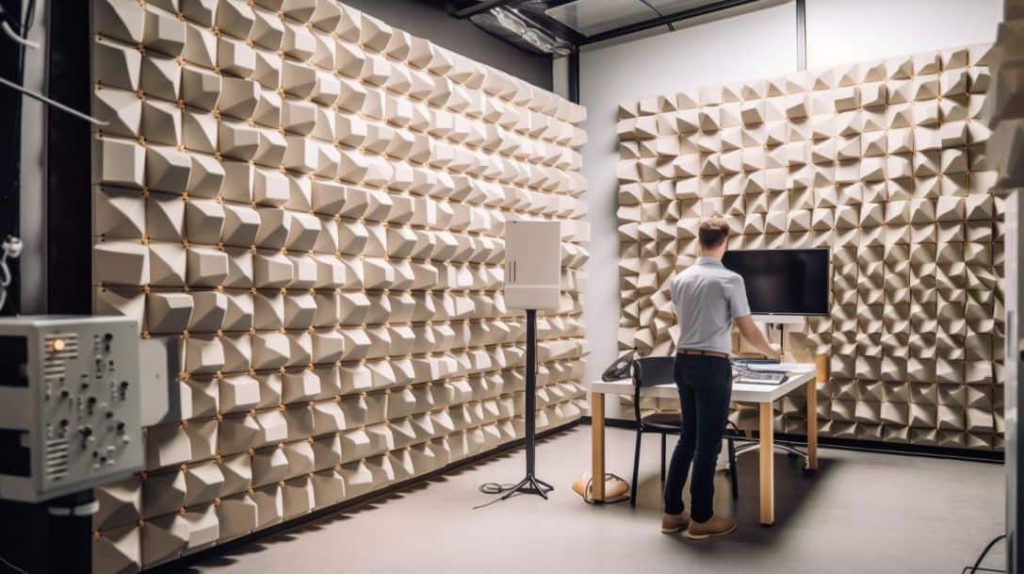
Constant innovation in materials and assembly design indicates an exciting future for enhanced acoustics in next-generation EIFS. Some emerging technologies that indicate the future direction of sound control include:
Tunable Insulations – Manufacturers are developing proprietary EPS foam chemistries that can be adjusted during production to target specific noise frequencies for absorption. Panels can be tuned to block traffic hum or other predominate local sounds. The ability to customize boards for the sound profile of a site will maximize noise reduction.
Integrated Resonators – Small resonating chambers and tubes are being incorporated into insulation boards that dissipate sound energy. Orienting the chambers perpendicular to the wall face enhances absorption. Resonators can eliminate noises that standard EPS misses.
Adaptive Materials – Materials like porous metals, micro-slit polymers, and other sound-reactive substances are being explored for EIFS application. Adaptive materials automatically respond to noises by altering their physical properties to dampen the vibrations. This provides self-adjusting acoustic performance.
Magnetorheological Fluids – These “smart” fluids containing micrometal particles change viscosity instantly when exposed to electromagnetic fields. This allows dynamic tuning of sound-damping characteristics using electrical signals. It provides the ability to actively control noise in response to interior and exterior conditions.
Machine Learning Optimization – Acoustic modeling and simulation of full-scale EIFS assemblies is advancing rapidly. Machine learning algorithms can tweak designs for maximum noise reduction. The use of AI for acoustic optimization will accelerate material innovation and efficient assembly strategies.
The acoustic technologies emerging for EIFS leverage advanced materials, adaptive properties, and simulation to actively customize and enhance sound insulation. This will allow EIFS to mitigate noise in even the most challenging sonic environments.
Conclusion
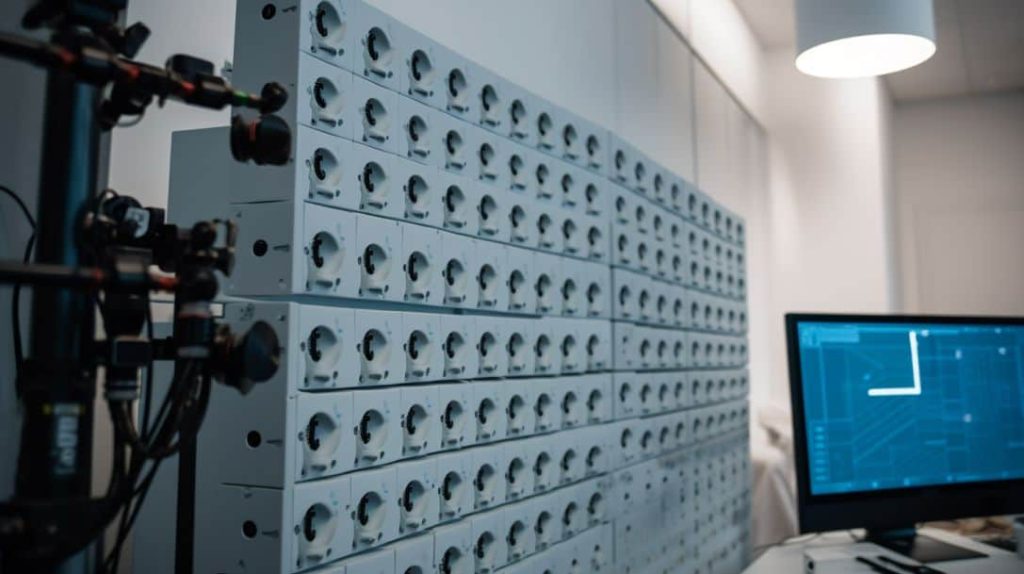
This guide has examined key factors regarding the impressive acoustic performance of exterior insulation and finish systems (EIFS). To summarize:
Benefits of EIFS for Acoustic Performance
- Laboratory testing proves EIFS blocks 10-15 more decibels of exterior noise than traditional claddings like stucco, brick, and concrete. This markedly enhances interior sound quality.
- The noise reduction capabilities stem from the sound-absorbing properties of the EPS insulation boards. This dampens noise vibrations rather than transmitting them.
- Additional mass from layered EIFS components further augments acoustic isolation.
- The result is a dramatic improvement in sound transmission loss that reduces unwanted noise penetration, reverberation, and ambient interior sound levels.
Importance of Proper Installation and Material Selection
- To achieve optimal noise blocking, proper installation by a certified contractor is critical. Common flaws like incomplete flashing or adhesive gaps severely degrade acoustics.
- Likewise, using the appropriate thickness and density of EPS insulation tailored to the noise environment boosts sound-dampening performance.
- Consulting acoustic data to compare products, model assemblies, and predict field results helps make informed acoustic design decisions.
An Acoustically Advanced Future
- Ongoing advances in acoustic membranes, sealants, prefabricated panels, and smart adaptive materials will enable EIFS to provide even greater sound control going forward.
- Technologies like tunable insulations, integrated resonators, and magnetorheological fluids will provide new ways to actively optimize EIFS acoustic performance.
If exterior noise is an issue for your property, be sure to contact Indiana Wall Systems for a free estimate on installing high-performance acoustic EIFS. With over 25 years of EIFS experience, their experts can design a system to dramatically reduce noise and improve your interior sound environment.
FAQs
How Does EIFS Compare to Fiber Cement Siding for Sound Insulation?
Fiber cement siding is considered to have moderately good sound insulation properties with an STC rating of around 35. However, EIFS significantly outperforms fiber cement, with tested STC values of 43-49 depending on the thickness and density of the EPS insulation boards used. The foam insulation layer gives EIFS superior sound-blocking capacity over any type of exterior siding product.
What Level of Noise Reduction Can I Expect from Installing EIFS?
It depends on the existing exterior cladding, but you can expect a dramatic improvement. Lab tests show that EIFS reduces exterior noise by 10-15 decibels compared to non-insulated walls. Subjectively, a 10-decibel decrease cuts the loudness of exterior noise in half. EIFS is one of the most effective ways to create a quieter interior space protected from outside noises.
Does Adding Stone Wool Insulation Boards Improve EIFS Acoustics?
Yes, stone wool insulation enhances the already excellent sound-dampening of EPS foam-based EIFS. Stone wool absorbs noise vibrations very effectively across a wide frequency range. Test data shows stone wool EIFS assemblies can achieve 1-3 decibels greater transmission loss compared to using EPS alone. The density and thickness of the stone wool also add useful mass.
Can EIFS Be Used on Interior Walls for Sound Isolation?
Absolutely. The noise-blocking qualities of EIFS make it an ideal interior wall solution anywhere sound transmission needs to be minimized. This includes home theaters, music studios, mechanical rooms, bedrooms, and bathrooms. The same principles of sound-absorbing rigid insulation separated by a gap from an interior finish apply equally to interior EIFS walls.
What Should I Look for When Selecting an EIFS Installer for Optimal Acoustics?
Be sure to choose an installer certified by the EIFS Council, who fully understands proper application techniques. Proper adhesive use, joint sealing, and integration of flashing and penetrations are vital for flawless acoustic performance. Also, discuss their experience with specialized sound-damping materials like acoustic membranes and sealants to enhance noise reduction.

